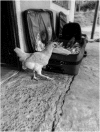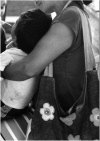Using Photovoice to Encourage Reflection in Health Professions Students Completing a Short-term Experience in Global Health
- PMID: 32431312
- PMCID: PMC7223937
- DOI: 10.5688/ajpe7630
Using Photovoice to Encourage Reflection in Health Professions Students Completing a Short-term Experience in Global Health
Abstract
Objective. To engage health professions students in a photo and caption sharing methodology to stimulate reflection and inculcate principles related to global health at a formative time in training. Methods. Undergraduate and graduate students from multiple colleges enrolled in a course that would prepare them for an in-country global health experience. As part of the course, participants took photos to illustrate one of three topics: global health ethics, interprofessional practice, or social determinants of health. The iterative and participatory photovoice process was used for students to analyze, discuss, and reflect on their work in country and upon return. Final photos with captions were displayed online. Researchers analyzed photos and captions using content analysis to identify unifying themes. All students were required to complete the photovoice assignment, but only those who gave informed consent were included in the qualitative analysis. Results. Twenty-six students were included in the analysis. Two overarching themes emerged: revelation and adaptation. Revelation encompassed novel elements that surprised the students, including differences and similarities between the United States and Ecuador. Coded segments related to adaptation discussed participants' resourcefulness while challenging work environments, and how they would apply this new perspective to their future practice in the United States. Conclusion. This global health photovoice project provided a unique medium for reflection for health care trainees. This project enhanced our understanding of the learners' perspectives and this new means of expression offered the learners a greater opportunity for deeper reflection. The assignment also revealed gaps in learning related to social determinants of health and areas of concern related to solidarity and privilege.
Keywords: education abroad; global health; medical mission; photovoice; reflection.
© 2020 American Association of Colleges of Pharmacy.
Figures





Similar articles
-
Comparing Photovoice to Traditional Reflection to Identify Student Learning on a Medical Mission Trip.Am J Pharm Educ. 2020 Apr;84(4):7599. doi: 10.5688/ajpe7599. Am J Pharm Educ. 2020. PMID: 32431307 Free PMC article.
-
Twelve tips for medical students to facilitate a Photovoice project.Med Teach. 2016 Oct;38(10):981-986. doi: 10.3109/0142159X.2016.1170779. Epub 2016 Apr 13. Med Teach. 2016. PMID: 27076182
-
A picture with a caption: Using photovoice as cultural self-reflection in communication sciences and disorders.J Commun Disord. 2022 Nov-Dec;100:106277. doi: 10.1016/j.jcomdis.2022.106277. Epub 2022 Nov 4. J Commun Disord. 2022. PMID: 36343388
-
Rural nursing education: a photovoice perspective.Rural Remote Health. 2012;12:2061. Epub 2012 May 31. Rural Remote Health. 2012. PMID: 22668083
-
The ubiquity of uncertainty: a scoping review on how undergraduate health professions' students engage with uncertainty.Adv Health Sci Educ Theory Pract. 2021 Aug;26(3):913-958. doi: 10.1007/s10459-021-10028-z. Epub 2021 Mar 1. Adv Health Sci Educ Theory Pract. 2021. PMID: 33646469 Free PMC article.
Cited by
-
Photovoice: Integrating Course-Based Research in Undergraduate and Graduate Social Work Education.Br J Soc Work. 2020 Dec 3;51(2):712-732. doi: 10.1093/bjsw/bcaa154. eCollection 2021 Mar. Br J Soc Work. 2020. PMID: 33846680 Free PMC article.
-
Expanding worldviews on psychometric analysis of measurement tools in health professions education and research.Anat Sci Educ. 2025 Aug;18(8):838-851. doi: 10.1002/ase.70053. Epub 2025 Jun 11. Anat Sci Educ. 2025. PMID: 40500914 Free PMC article. Review.
-
Photovoice in Aggression Management Training for Medical and Nursing Students-A Pilot Study.Healthcare (Basel). 2024 Apr 23;12(9):873. doi: 10.3390/healthcare12090873. Healthcare (Basel). 2024. PMID: 38727430 Free PMC article.
-
Integrating photovoice as an adjunct teaching modality in improving critical thinking disposition among Chinese nursing students in community health nursing: a mixed-methods study.BMC Nurs. 2025 Jun 4;24(1):641. doi: 10.1186/s12912-025-03258-8. BMC Nurs. 2025. PMID: 40468329 Free PMC article.
-
Photovoice and Health Perception in a Group of Early-Career Nurses.Nurs Rep. 2024 Aug 29;14(3):2192-2206. doi: 10.3390/nursrep14030163. Nurs Rep. 2024. PMID: 39311172 Free PMC article.
References
-
- Kuh GD, O’Donnell K. Ensuring Quality & Taking High-Impact Practices to Scale. Washington, DC: Association of American Colleges and Universities, 2013.
-
- Johnson AM, Howell DM. International service learning and interprofessional education in Ecuador: findings from a phenomenology study with students from four professions. J Interprof Care. 2017;31(2):245-254. - PubMed
-
- Bui T, Evert J, McCarthy V, et al. . Reflections in Global Health; An Anthology. San Francisco, CA: Global Health Collaborations Press, 2016.
-
- Lawrence RL. Powerful feelings: exploring the affective domain of informal and arts-based learning. New Directions for Adult and Continuing Education. 2008;(120):65-77.
-
- Barone T, Eisner EW. Arts Based Research. Thousand Oaks, CA: Sage Publishing; 2012.
MeSH terms
LinkOut - more resources
Full Text Sources
Medical
Research Materials

